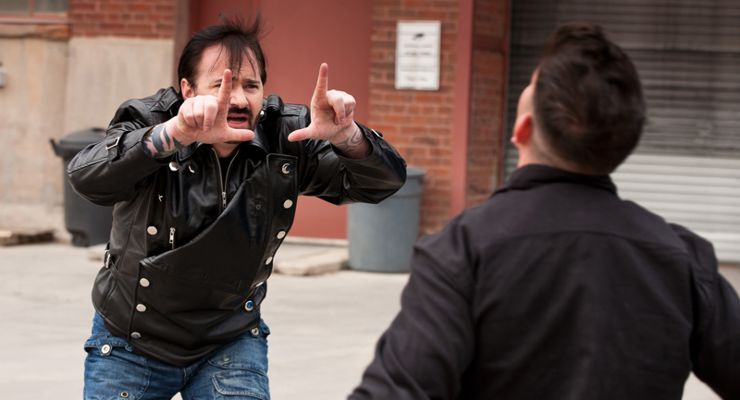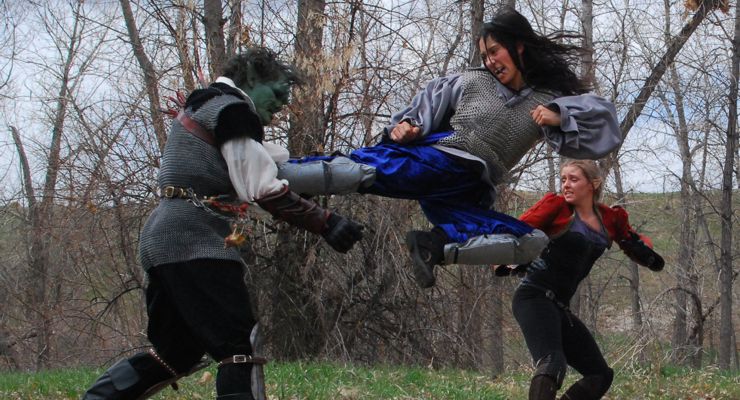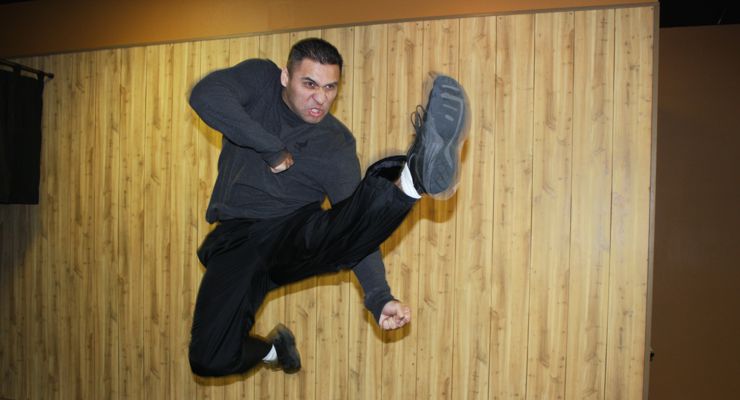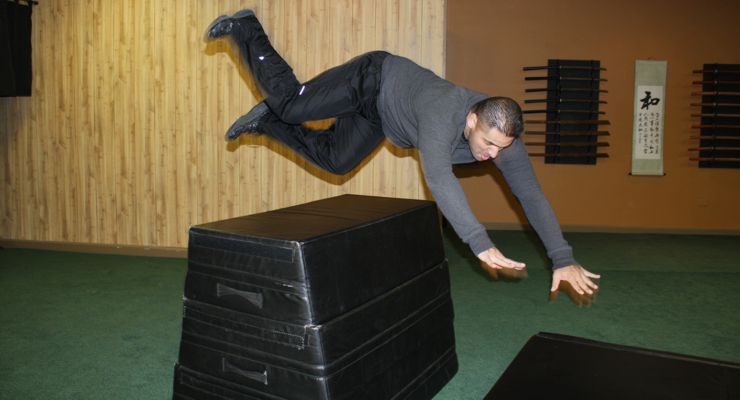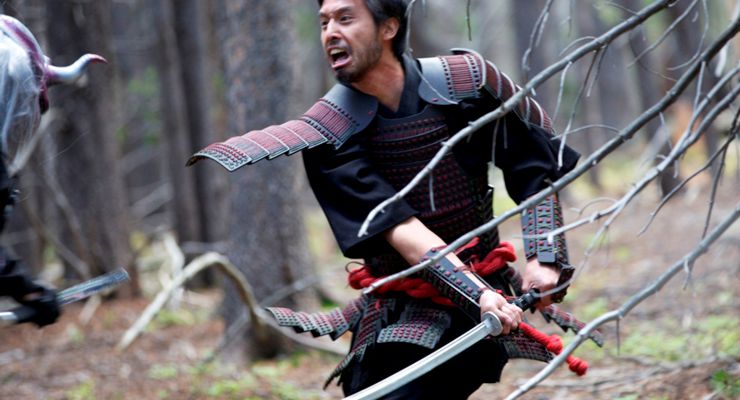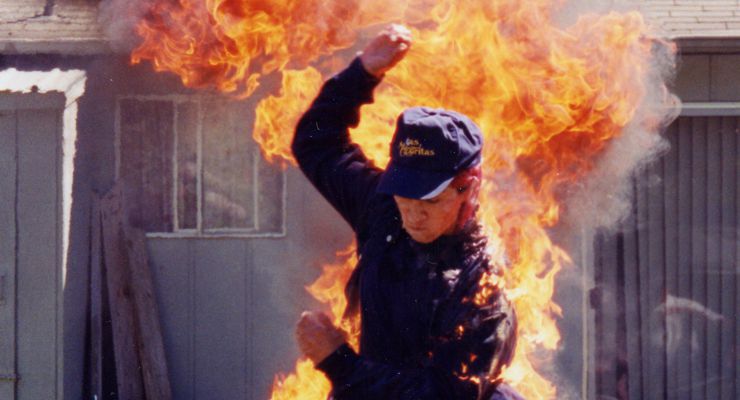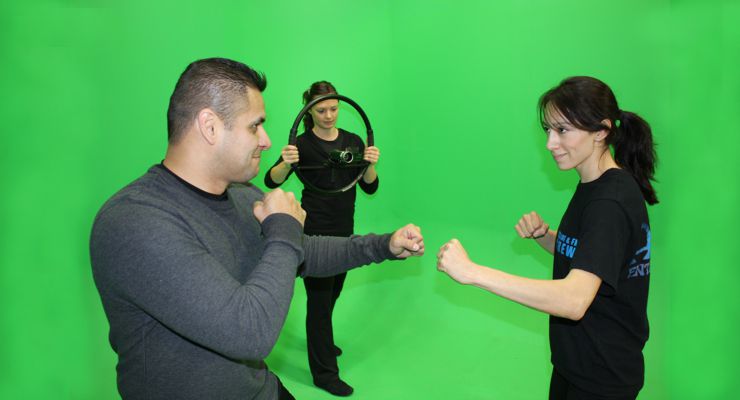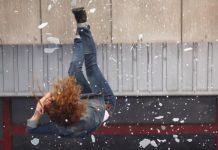Many Martial Artists would like to make the leap from Martial Artist to film performer very quickly, but it is a difficult jump. I would like to offer a few pointers to Martial Artists who are planning on pursuing a career in the film industry. First off, be prepared for disappointment. In the beginning it is always difficult. You are probably used to getting a great deal of respect for your accomplishments in the Martial Arts. However, you must get un-used to it. Do not expect anyone in the film industry to be impressed by your rank. It does not matter to them if you are a black belt or a white belt. Their only concern is that you can deliver the action in their project. This is a powerful blow to the ego and many Martial Artists never get past this point. This is their biggest mistake. Forget your rank. This is not the Martial Arts industry, this is the Film industry. Think film. You are a no longer a Martial Artist, you are a Martial Actor.
FOUNDATION SKILLS
There are certain skills that are expected from someone claiming to be a Martial Artist. A well rounded knowledge of all aspects of unarmed fighting, fundamental acrobatics skills, and abilities with a wide range of weapons.
UNARMED COMBAT
Being able to apply a wide variety of striking skills utilizing all the bodies’ available weapons is key. The more capable you are with precision and power the better. Fluidity in defensive skills is also valuable. The ability to block, trap, parry, and redirect attacks must be refined so that energy does not stop and start again with unnatural pauses. If you have grappling and throwing skills, these can also be utilized as part of your arsenal. There’s just one rule. Everything must translate to the screen. This means that all the skills must be adapted to meet the needs of theatrical combat. Some changes will be minor, some will be major.
The first major change is that you are no longer trying to “fight” your opponent. Instead you are forming a partnership with your opponent in which you deliver a sequence of fighting maneuvers with dance-like rhythm that is appealing to an audience. It can be a graceful exchange of energy or it can be a brutal onslaught…either way all that matters is that the partnership between the fighters is solidified. When working in conjunction with another performer, you must often adapt your skills to them and they must adapt their skills to you.
Minor changes may include lowering the position of your hands when in a defensive posture so your face is visible to the camera, or changing your posture from a side stance to a more open stance to create a modified position that reads better for the camera. Just listen to the cinematographer, the fight choreographer, and the director…and remember…don’t argue and start telling them that a “Real Fighter” would not do what they are asking. They know how to get the shot they need. You must adapt.
ACROBATICS
Acrobatic skill is another necessity to the Martial Actor. Dexterity is a valuable ally. Such physical grace allows you to not only perform feats involving rolls, springs and flips, it also enables you to adapt to your surroundings, using walls, tables, chairs and other inanimate objects as improvisational props that can be used during the application of the acrobatic technique. It’s not always the biggest moves that are impressive. A simple roll can be amazing if used in an unorthodox manner. What most don’t realize is that acrobatic prowess is how a Martial Actor can apply vicious looking falls without getting hurt. The real trick is making these moves look unplanned.
The more refined your skills are, the more opportunities will come your way. The reason for this is that in most cases you will be the one getting beaten up, so although your skills at fighting are key, your ability to take a punch is much more important. So what does this have to do with acrobatics? Everything. Anyone can just fall down from a punch or kick…but if you can back flip when someone delivers a front kick to your jaw, or if you can do an aerial barrel roll when you are hit with a spinning hook kick, I can guarantee you will get more screen time.
CLASSICAL WEAPONRY
The Martial Actor should also attain grace and elegance with a number of weapons, striving to become overly animated in their application. Swords, staves, flails, spears, and other such classical weapons hold extreme value. Much like their unarmed training, one should be focused on solid skills. Simply picking up a sword and swinging it around does not imply proficiency. Each weapon is an art form that should be studied diligently so their individual subtleties will emerge during their use in choreography. These skills will naturally translate to a number of improvised weapons such as bottles, crowbars, bats, pool cues, etc. that are often utilized in action scenes taking place in common locations.
Now I must be clear. If your weaponry skills are simply your unarmed form with a staff in your hands it is much different from having true staff training. Your skills with each individual weapon should be unique. This requires diligent training with a master of the weapon. There is no quick path…only constant study in search of perfection.
STUNT SKILLS
Aside from unarmed, acrobatic and classical weaponry skills, the Martial Actor should also expand their awareness to stunt related skills, such as; High falls, Jerk harness, Body burns, Wire flying, Linear falls, Breakaways, Horsemanship, Air ram and any other such skill that may be able to enhance their physical prowess. Finding a qualified instructor to teach these abilities is much harder than finding a martial arts teacher, but these skills can be acquired over time as training opportunities present themselves.
PERFORMING
Now that we’ve addressed the general skills, it’s time to talk about performing. The hardest part about applying your action skills in the film industry is it’s no longer just about you. You will have to apply your skills in a variety of scenarios that will likely involve a set, a camera, a director, a crew, other actors, and (if you’re lucky) explosions, gunfire, moving vehicles, etc. Working while submerged among all these elements can be very distracting and quite difficult. Thus, you must have confidence in your abilities and be able to perform under great stress.
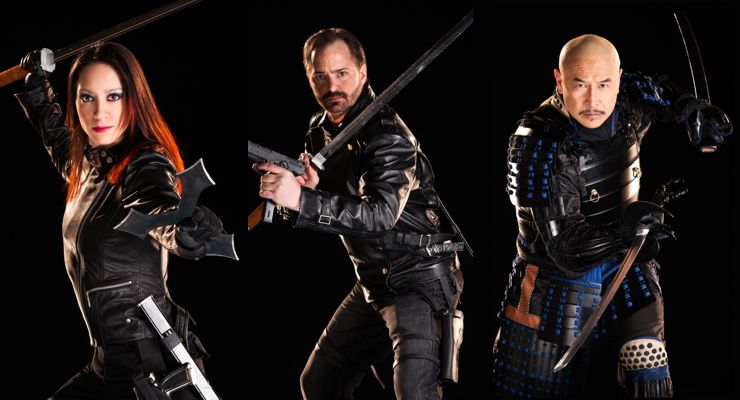
POSTURE & ATTITUDE
In theatrical combat, the posture is extremely important. This is because it depicts the strength and skill of the Martial Actor. A focused technique delivered from a strong and balanced posture gives the impression of power and expertise. This is perhaps the most essential aspect of fighting for camera. Image is everything. No matter what the situation, the posture reflects the skill. Taking a basic posture as used in normal self-defense is most likely a bit boring for film. Postures should be a bit more exotic and theatrical.
Attitude is another important aspect to the Martial Actor. Every fighter has an attitude. Attitude is the emotional feeling that the actor radiates without ever speaking. It’s what makes a powerful villain more powerful, a cowardly thief more cowardly and a sexy heroine more sexy. This is what makes Chinese Kung Fu movies so popular. Each character has a unique attitude that is reflected in their on-screen personality. This makes a character memorable.
Together posture and attitude are reflected in the body and eyes. As a Martial Artist this is known as “Spirit Immobilization”, the ability to capture your opponents gaze and hypnotize them for a moment so their heart skips a beat. If you can do this as a Martial Actor, the viewer will be equally entranced.
STYLE AND SKILL
Every character that the Martial Actor portrays in film will have a specific fighting style that they must appear to be proficient with. In one film you may be required to fight with a sword and in another they may have to fight unarmed. What you fight with is irrelevant. It is the style and skill level of the character that you must attune with. You must let go of who you are in reality, in lieu of who you are portraying in the film. When the Martial Actor assumes the role of any given character, they must also assume that character’s knowledge and abilities. The true challenge lies in researching the character and devising a style and skill level that makes sense.
CONTACT
The major difference between real fighting and film fighting is contact. There is little or no contact made during a stunt fight. Never fall prey to the actor or stuntplayer who wants to actually strike you because they want to make it “look real.” It is never acceptable if anyone hits you with an excessive strike that was obviously not an accident. The trick is to give the audience the impression of contact. In situations where the effect of realism cannot be reproduced without contact, you can be sure that there is a way to cheat the technique using a creative camera angle or specialized equipment.
PHYSICAL DIALOGUE
Each time the Martial Actor engages in direct combat with someone on film it is simply a matter of “Projecting” and “Receiving” energy. This is known as “Physical dialogue.” In essence, the combatants involved in the scene must communicate without actually speaking. They must talk to one another using subtle changes in weight distribution, eye contact and controlled attacks. If the Martial Actor is capable of maintaining this type of communicative state with their partner, their fight will appear real.
CROSSING “THE LINE”
As all film fighters are taught, there is a specific technique used to make a hit look believable. That technique is to cross an imaginary line that connects the camera lens to the target being struck. If this is done properly, the strike will appear to have impacted on the target without ever actually having come close to contact. To be effective in the application of this technique, the Martial Actor must have a constant awareness to the camera’s location so that they can ensure that their strikes cross the invisible line.
SELLING THE HIT
When struck, the Martial Actor must be able to effectively receive the energy behind the strike. This is known as “Selling the hit.” There is a point where the actor delivering the hit stops and the person receiving the hit begins. This is all a matter of timing. ven if the person striking is totally convincing, the person receiving the hit can ruin the shot by not taking it well. Being able to simulate a believable impact in itself requires great skill, but the Martial Actor should seek to further intensify the action by recovering from impacts in a variety of complex maneuvers involving; aerial barrel rolls, highly elevated back falls and other unique falls that serve to increase the sense of raw power behind a received strike.
BY-PLAY
Even the most well-choreographed fights must have “By-play.” By-play are actions taken by the participants of a fight that go beyond the technical choreography. Subtle facial expressions, improvised physical actions and spontaneous dialogue that make a scene more believable. By-play is an intricate part of the Martial Actors repertoire of skills. Being able to hold the camera’s attention with By-play is a Martial Actor specialty. You must never stop communicating with the camera. Every move must have a meaning. From the way you wipe blood from a cut on your lip to the expression of fear you project when faced by multiple opponents, the Martial Actor must possess a fervor for dramatic flair.
IN CONCLUSION
If you can take and employ this knowledge effectively you will be on your way to your intended goal. Once you have proven your value as a Martial Actor, you will find that fight choreographers, producers, and directors will be far more interested in working with you because you are more prepared…which makes their job much easier.
Until next month…

